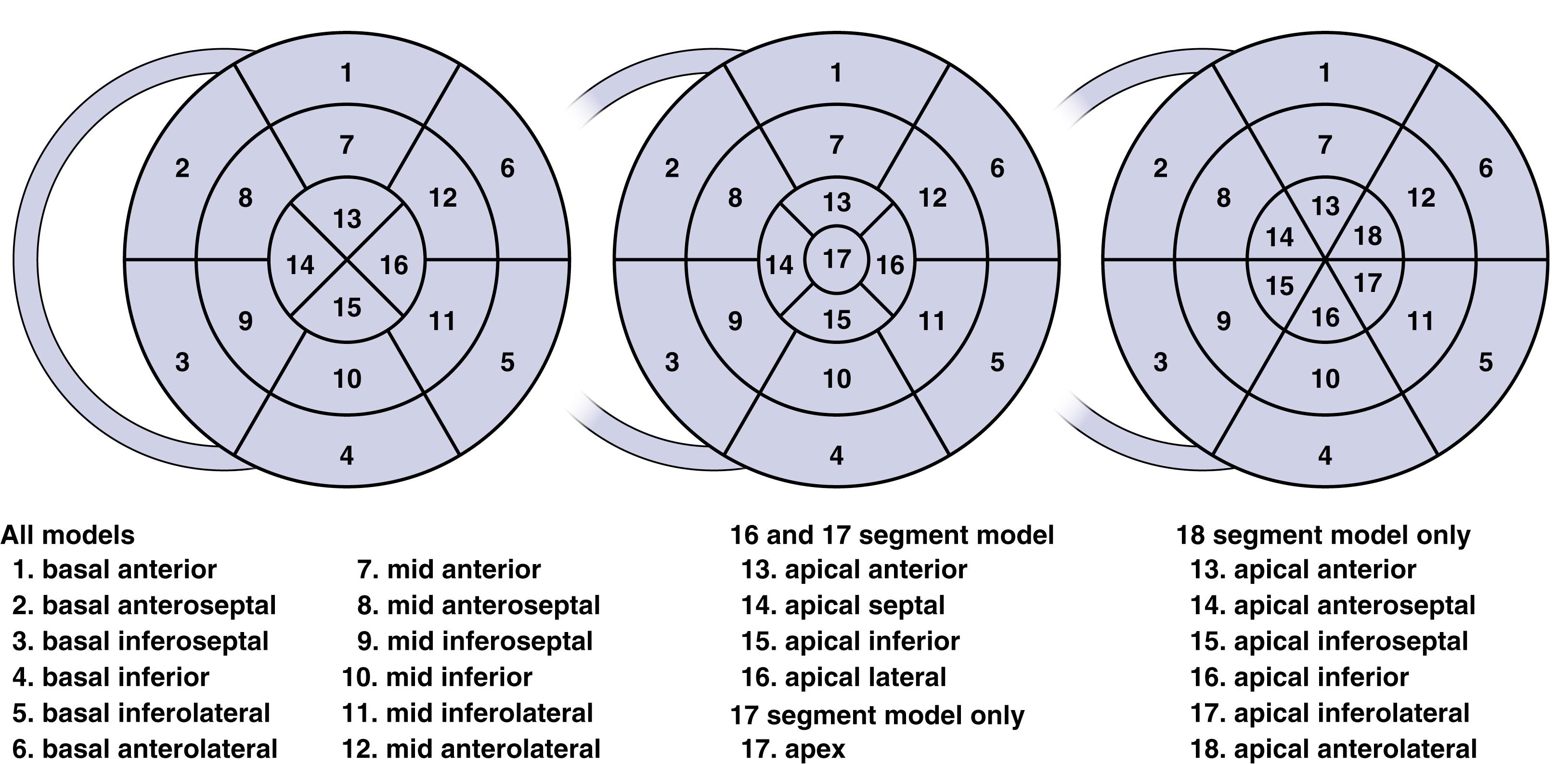Physical Address
304 North Cardinal St.
Dorchester Center, MA 02124
Given its considerable diagnostic, prognostic, and therapeutic implications, the assessment of left ventricular (LV) regional systolic function forms an important part of any echocardiographic examination. Because coronary artery disease (CAD) is by far the commonest cause resulting in regional LV systolic dysfunction, the mere presence of regional wall motion abnormality (RWMA) usually confirms the presence of underlying CAD. Additionally, the distribution of RWMA helps in predicting the location of stenosis in the coronary arterial tree, whereas the extent of RWMA and its potential reversibility help in guiding several therapeutic decisions in these patients.
Numerous qualitative, semiquantitative, and quantitative methods have been developed over the years to evaluate LV regional systolic function ( Table 25.1 ). All of these techniques rely on a segmental approach that divides LV myocardium into a number of segments and the contractile function of each segment is then assessed individually.
| Modality | Method |
|---|---|
| M-mode |
|
| 2D echocardiography |
|
| 3D echocardiography |
|
| Tissue Doppler imaging |
|
| Speckle-tracking echocardiography (can be 2D or 3D) |
|
For the purpose of standardization, the American Society of Echocardiography had recommended a 16-segment model in 1989, but a 17th segment, the apical cap, was added later to allow comparison with other imaging modalities, such as nuclear imaging ( Fig. 25.1 ). , Although either model can be used for assessment of LV systolic function by echocardiography, the 16-segment model remains clinically applicable because the apical cap normally does not exhibit any apparent contractile function. However, when the WMA is localized to the true apex, the 16-segment model may lead to overestimation of systolic dysfunction during scoring. In comparison, strain imaging software typically divide the left ventricle into 18 segments.

Become a Clinical Tree membership for Full access and enjoy Unlimited articles
If you are a member. Log in here